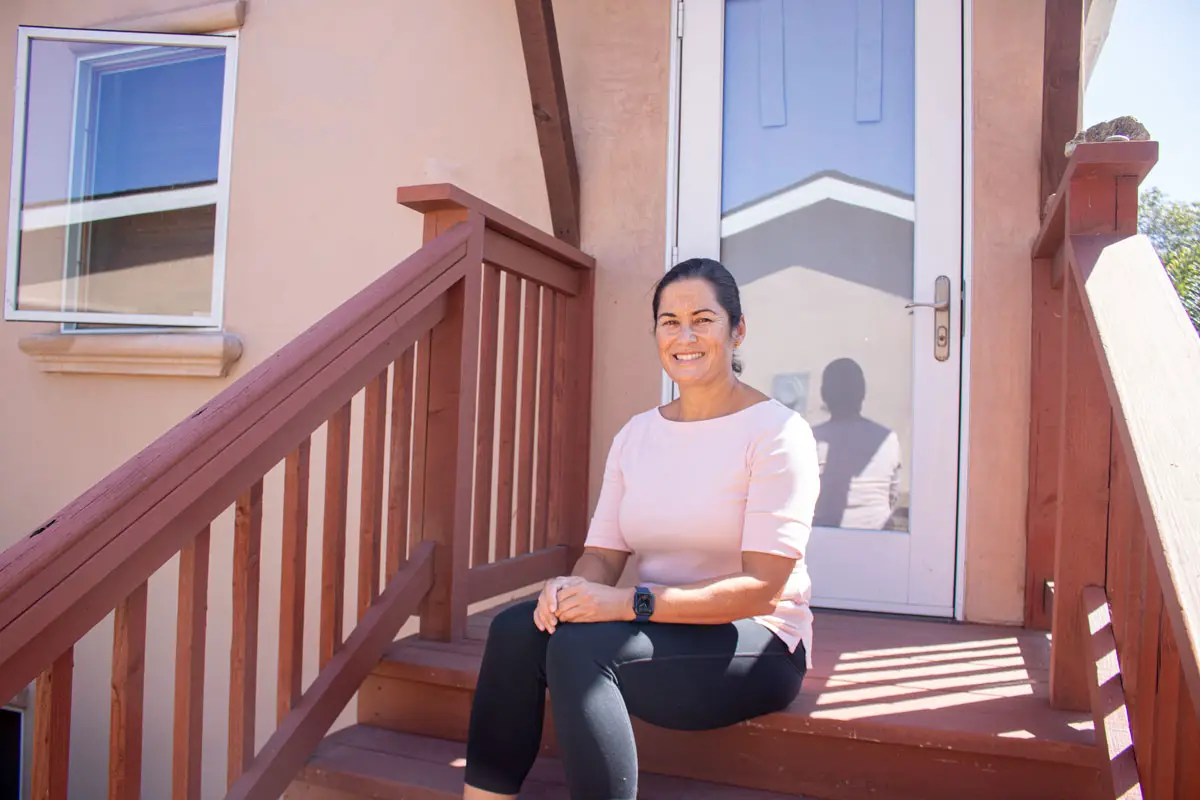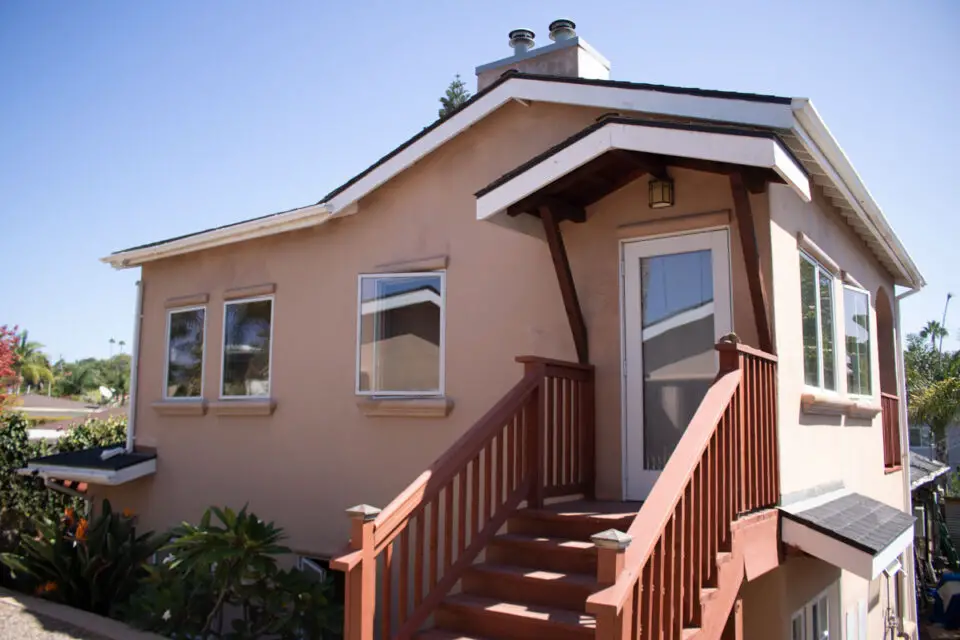ENCINITAS — The boom in accessory dwelling units continues in San Diego County’s north coastal cities thanks to relaxed state requirements and local incentives, but renters and homeowners say more work is needed to make this housing stock truly affordable in the current market.
Many jurisdictions view accessory dwelling units, ADUs, granny flats or mother-in-law units as a possible remedy to the housing crisis since they can be built on existing single-home lots.
In Encinitas, a leader in North County regarding ADU construction and permitting initiatives, permit data indicates that more residents are applying for and receiving permits to construct these units in their backyard, their garage or convert an existing area of their home.
Compared to the 29 total permits approved in 2021, the city approved 79 permits in just the first eight months of 2022, records show. Across the region, developers say permit processing times are also picking back up after slowing down during the beginning of the COVID-19 pandemic.
“You’re looking at anywhere from four to six months [for a permit], sometimes two months if you’re lucky. During COVID, it was 12 to 18 months, maybe two years,” said John Arendsen, owner of Crest Backyard Homes in Encinitas. “With the economy turning down a little bit, I thought maybe we should tighten our belts a little bit, but the opposite is happening. We’re getting busier.”
Encinitas resident Michael Murray is one of several individuals to construct an ADU on his property in the past few years as an additional form of income. He rents out the approximately 400-square-foot unit connected to his home for $1,750 a month with utilities included, a cost he said is low for the area.
“I don’t rent at top-market value, but I’m certain I could get several hundred dollars more a month than I get,” Murray said. “There’s a ton of people looking. It’s actually heartbreaking … in Encinitas, a one-bedroom goes for $2,600.”

For many renters, an ADU is all they can afford in the market.
Barbara Gayle is one of several individuals renting an ADU in Encinitas. The one-bedroom unit makes up the whole top floor of the primary residence, is accessible via her own entrance, and costs her $2,250 per month.
“It is an affordable option for me in the current market, but mainly because I cannot yet afford to buy a place in [San Diego], particularly not on the coast,” said Gayle, who has lived in the unit for around three years. “The area is getting less and less affordable, and ADUs might be a viable option for more renters.”
Zoë, another Encinitas renter who chose to go by her first name, pays $1,600 monthly for a 200-square-foot ADU. Moving to a larger place is not an option right now due to ever-rising housing costs.
“I could not afford to move with the prices I see, and my place will definitely rise by the time I leave by $200 to $600,” she said.
It’s hard to know how many ADUs are used for rentals versus housing for a family member or an alternative use like office space, as jurisdictions have no obligation to collect this information. Arendsen estimates that around half the ADUs his company constructs are for individuals planning to rent them out.
However, cities require homeowners to self-attest the rental value yearly if the ADU is deed-restricted for a low-income individual. This is the case in Carlsbad, where 227 ADUs have been constructed over the years to meet inclusionary housing requirements.
Facilitating ADUs
The passage of several state laws has made it notably easier for California residents to construct ADUs in the past few years. Yard setback requirements have been decreased from 25 feet to four feet, municipalities have less say over maximum and minimum unit sizes, and homeowners no longer have to generate additional parking spaces if the home is within a mile of public transit.
Several local jurisdictions have embraced local ADU incentive programs to facilitate construction further. For the past few years, Encinitas has partnered with local architects to offer building plans for permit-ready ADUs (PRADUs), which homeowners can use when applying for an ADU permit, rather than spending thousands on an architectural plan.
One of the firms that provided PRADU plans to the city is DZN Partners, which also continues to work with residents on custom designs. Bart Smith, Principal Architect at DZN, said the wait time for permit approval from PRADUs in Encinitas is the same as other units.

“We kind of did it as a favor to get the ADUs going,” said Smith. “Right now, it’s taking the same amount of time to get those reviewed as other ADUs and custom projects.”
Encinitas spokeswoman Julie Taber said while permit-ready units go through the same review cycle as other units, they typically take less time overall to process.
City records show that {Encinitas has issued 21 permits for these PRADUs since 2020. The city of Carlsbad plans to adopt a similar program next year.
“We are working on a pre-approved ADU set and expect that by the middle of next year,” said Carlsbad City Planner Eric Lardy. “We would have four pre-approved detached ADU plans that customers could pick from and utilize.”
Incentives for affordable ADUs
While many cities aren’t having a problem getting residents to construct ADUs, incentivizing deed-restricted, low-income ADUs is another story. Still, many leaders are counting on ADUs to help satisfy requirements for low-income unit construction in their state-mandated Housing Elements.
In Del Mar, one of the county’s most expensive and affluent cities, an ADU Incentive Pilot Program offers developers and property owners a 500-square-foot floor area bonus if they agree to rent out the ADU to low-income households for at least 30 years.

Since its launch in 2018, the program has created one deed-restricted ADU, which remains to be rented out to a low-income occupant. Within its current Housing Element, the city aims to provide 15 deed-restricted ADUs by 2029.
“As part of Housing Element implementation, the City is in the early stages of studying potential new incentives to make available to encourage owners to deed restrict their ADUs for rent to low-income households,” said Principal Planner Amanda Lee.
Solana Beach Mayor Lesa Heebner said ADUs are the best hope for individuals to live affordably in Solana Beach, where the average rent for a 1-bedroom apartment is currently around $3,000, according to Zumper.
In the future, she said she would like to add an ADU grant program, which will use the city’s pot of money from in-lieu affordable housing fees to help fund the construction of deed-restricted ADUs, to the city’s work plan.
“What we really would like to see is more deed-restricted ADUs if possible, because that’s really what we’re looking at here, is a housing crisis,” Heebner said.
Homeowners with an ADU can rent it out at any price, and many find a high demand even for less affordable prices.

Encinitas resident Jennifer Taylor rents out her furnished 360-square-foot ADU with a loft bedroom for $3,700 a month and said she receives tons of interest from young couples and individuals looking for a place for between one and three months.
“It really increases the value of our home, to have a rental unit that generates an income stream,” Taylor said. “The ADUs were supposed to help with affordable housing, and that’s not the case because the city doesn’t mandate what we can charge for it, and it’s all supply and demand, and furnished rentals are in pretty high demand.”
For now, the income it generates makes it a sound investment as she and her husband work to pay off their loan, and eventually, they envision having their parents live there, she said.
Developers say that just because ADUs can be smaller than usual apartments, this does not mean they are cheaper when it comes to construction, and rents per square foot are often higher.
At Crest Backyard Homes, a factory-built unit between 400 and 600 square feet will cost a property owner around $200,000, while a unit of the same size but constructed on-site typically costs closer to $300,000.
According to Arendsen, fixed costs unique to ADUs, such as permitting and site preparation work, often make development costs higher than other housing developments.
“There’s really no economy of scale. The smaller the home is, the more it costs. All the site work, that’s pretty much a constant, no matter how big or how small,” Arendsen said.
Vista resident Samkiat Leeitan had a prefabricated ADU from Crest Backyard installed at his home earlier this month as a living space for his parents, who lived under the same roof as him and his family. The 589-square-foot unit was constructed in a factory, transported to Vista, and lifted via a crane into the backyard.
“They’ve been with us for almost eight years. This way, they can be close to us, but they’ve got their own little thing,” he said.




